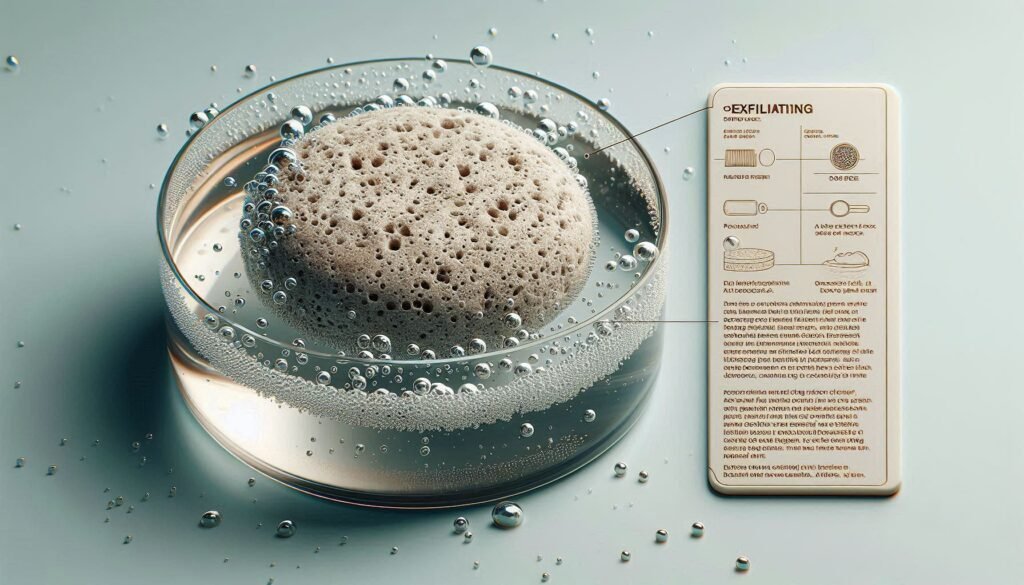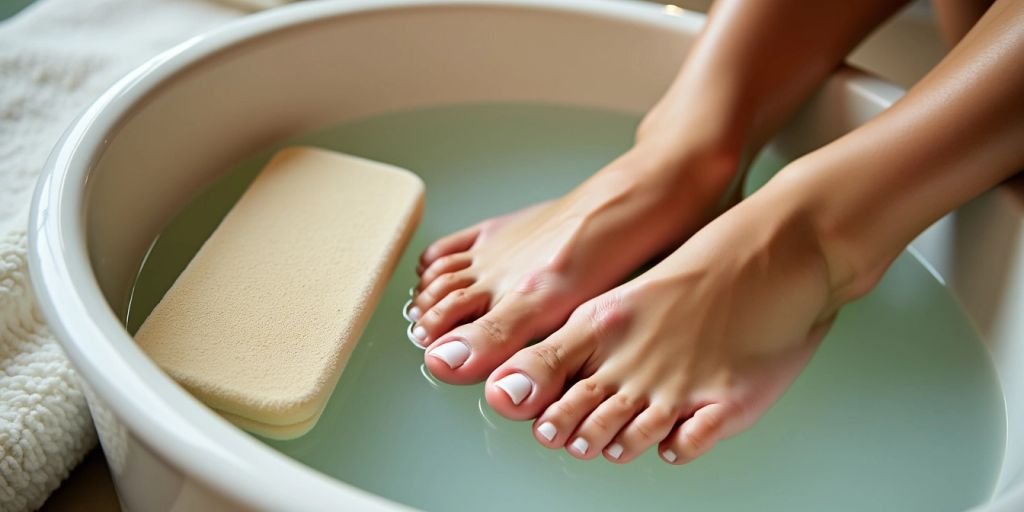Table of Contents
Taking care of your feet is important, and one of the best tools to help you do that is a pumice stone. This simple, natural tool can help you get rid of dead skin, making your feet feel smooth and soft. In this article, we’ll guide you on how to use a pumice stone correctly to achieve the best results for your feet.
Key Takeaways
Understanding Pumicestone and Its Benefits

What is a Pumicestone?
A pumicestone is a lightweight, highly porous rock that forms when lava and water mix. It’s often used as a personal care product for its natural exfoliating properties. This volcanic glass is excellent for removing dead skin cells and calluses from the feet. However, it’s best to avoid using it on delicate areas like the face.
Benefits of Using Pumicestone on Feet
Using a pumicestone on your feet offers several benefits:
Common Misconceptions About Pumicestone
There are a few misconceptions about pumicestones:
Preparing Your Feet for Pumicestone Use
Importance of Soaking Your Feet
Before using a pumicestone, it’s crucial to soak your feet in warm water. This softens the skin, making it easier to remove dead skin cells. Aim to soak for 5-10 minutes. If your skin still feels rough, add a few more minutes. For a spa-like experience, consider adding a few drops of essential oil or Epsom salt, which can help relax your muscles.
Best Soaking Solutions
Here are some effective soaking solutions:

Drying Your Feet Properly
After soaking, it’s important to dry your feet thoroughly. Use a clean towel to pat your feet dry, paying special attention to areas between the toes. This helps prevent any moisture-related issues like fungal infections. Make sure your feet are completely dry before moving on to the next step.
Step-by-Step Guide to Using Pumicestone
Wetting the Pumicestone
Before you start, make sure to wet the pumicestone with lukewarm water. This helps to soften the stone and makes it more effective for exfoliation. Using a dry pumicestone can be too harsh on your skin.
Proper Exfoliation Techniques
- 1. Soak your feet in warm water for 5-10 minutes to soften the skin. This step is crucial for making the exfoliation process easier and more effective.
- 2. Gently rub the pumicestone in a circular motion over the callused areas. Apply light to moderate pressure, depending on your comfort level. If you feel any pain, stop immediately.
- 3. Continue this process for 1-2 minutes. You may need to rinse the stone occasionally to remove the buildup of dead skin.
Rinsing and Repeating
After exfoliating, rinse your feet with water to remove any loose dead skin. If needed, you can repeat the exfoliation process, but be careful not to overdo it. Proper drying is essential after rinsing to prevent any moisture-related issues.
Remember, regular exfoliation is key to maintaining smooth and soft feet. However, avoid over-exfoliating as it can lead to skin irritation.
Post-Exfoliation Care

Moisturizing Your Feet
After exfoliating, it’s crucial to moisturize your feet. Use a hydrating lotion or foot cream to keep your skin soft and smooth. Look for products with ingredients like urea, salicylic acid, or ammonium lactate, which help soften the skin over time. For an extra treat, put on a pair of socks after applying the lotion to lock in moisture.
Avoiding Over-Exfoliation
Over-exfoliation can lead to redness, irritation, and increased dryness. If you notice these signs, reduce the frequency of exfoliation. A cold compress is a great way to stop the burning sensation. You can do this in any way you wish, from applying ice cubes to using ice packs or cold bags. Remember, it’s better to exfoliate gently and less often than to overdo it.
Signs of Proper Exfoliation
Proper exfoliation should leave your feet feeling smooth and soft, not raw or sore. If your feet feel hydrated and free of dead skin, you’re on the right track. However, if you experience any discomfort, it’s a sign to ease up on the exfoliation.
Taking care of your feet after exfoliation is just as important as the exfoliation itself. Proper post-exfoliation care ensures your feet stay healthy and soft.
Maintaining Your Pumicestone
Proper maintenance of your pumicestone is essential to ensure its longevity and effectiveness. Here are some key steps to keep your pumicestone in top condition.
Cleaning Your Pumicestone
After each use, it’s important to clean your pumicestone thoroughly. Rinse it under running water and use a bristle brush to scrub off any dead skin. Adding a small amount of soap can help remove dirt and bacteria. For a deeper clean, you can boil the pumicestone in hot water for about five minutes.
Storing Your Pumicestone
To prevent bacteria growth, make sure to store your pumicestone in a cool, dry area. Allow it to air dry completely before putting it away. Avoid storing it in damp places, as moisture can promote bacterial growth.
When to Replace Your Pumicestone
Over time, your pumicestone will wear down and become less effective. If it becomes too smooth or too small, it’s time to replace it. Regularly check your pumicestone to ensure it remains effective for exfoliation.
Remember, keeping your pumicestone clean and dry will help maintain its effectiveness and prevent bacteria buildup.
By following these steps, you can ensure your pumicestone remains a reliable tool for keeping your feet smooth and soft.
Alternative Uses for Pumicestone

Using Pumicestone on Hands
Pumicestone isn’t just for feet. You can also use it on your hands to remove calluses and rough skin. Simply soak your hands in warm water for a few minutes, then gently rub the pumicestone on the rough areas. Be careful not to overdo it, as the skin on your hands is more delicate than on your feet.
Pumicestone for Elbows and Knees
Elbows and knees can get rough and dry, too. A pumicestone can help smooth these areas. After a shower or bath, when your skin is soft, gently rub the pumicestone on your elbows and knees. This will help remove dead skin cells and leave your skin feeling smoother.
Other Creative Uses
Pumicestone has many other uses beyond skincare. Here are a few creative ideas:
- Remove pet hair from furniture and carpets by gently rubbing the pumicestone over the surface.
- Clean your oven by using a pumicestone to scrub away tough, baked-on grime.
- Use it in your garden to improve soil drainage and aeration, especially in dense clay soils.
Pumicestone is a versatile tool that can be used in many ways beyond just skincare. From cleaning to gardening, its abrasive texture makes it useful in various applications.
Conclusion
Using a pumice stone is a simple and effective way to keep your feet smooth and soft. By following the steps to soak, exfoliate, and moisturize, you can easily remove dead skin and calluses. Remember to be gentle and not overdo it, as too much scrubbing can hurt your skin. With regular care, your feet can stay healthy and feel great. So, grab a pumice stone and give your feet the pampering they deserve!
Frequently Asked Questions
What is a pumice stone used for?
A pumice stone is used to exfoliate thick areas of skin, like calluses on your feet. It helps remove dead skin cells, making your skin smooth and soft. You can also use it on corns and calluses on your hands, but never on your face because that skin is too delicate.
Do pumice stones really work?
Yes, pumice stones are effective at exfoliating calluses, corns, and rough skin on your feet and heels. Just make sure to use them correctly for the best results.
How do I use a pumice stone?
First, soak your feet in warm water for 5-10 minutes to soften the skin. Then, wet the pumice stone and gently rub it on the rough areas of your feet in a circular motion. Rinse your feet and repeat if needed.
How often should I use a pumice stone?
You can use a pumice stone a few times a week, but it’s important not to overdo it. Over-exfoliating can cause skin irritation and other issues.
Can I use a pumice stone if I have sensitive skin?
If you have sensitive skin, be very gentle when using a pumice stone. You might want to consider using a different exfoliation method, like a chemical exfoliant, to avoid irritation.
How do I clean and store my pumice stone?
After each use, rinse your pumice stone with warm water and scrub it with a brush to remove dead skin cells. Let it dry completely before storing it to prevent bacteria from growing.














Leave a Review